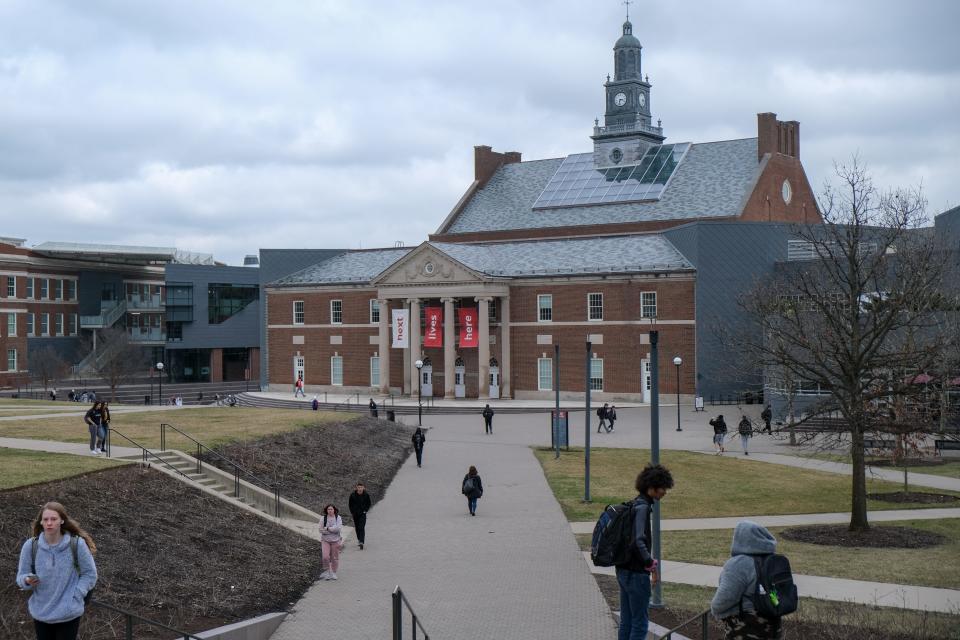College Decision Day typically falls on the first day of May. But even though that milestone has already passed this year, hundreds of high school students are still deciding which college they will attend in the fall.
Why? Colleges across the country — including the University of Cincinnati, Xavier University, Northern Kentucky University and Miami University — have postponed their college admissions deadlines to accommodate issues and delays caused by the Free Application for Federal Student Aid.
USA TODAY: How did the FAFSA rollout go so wrong? A look at the most important events
The student aid program, commonly called the FAFSA and which provides millions of students with the opportunity to attend college each year, started this year nearly three months later than normal. The delay made it impossible for some colleges to put together student financial aid packages in time for student admission decisions. Some students are still waiting for their financial aid.
In-state students, students with Pell Grants take longer to decide
For example, half of the University of Cincinnati’s admitted students received their financial aid package by the end of April, while the other half are still waiting. But the university’s vice provost for enrollment management, Jack Miner, says enrollment numbers already look pretty good despite the FAFSA delays.

Compared to May of last year, the University of Cincinnati’s commitments are more than a thousand students behind, Miner said. But since the university has postponed the decision deadline by a month, it would be fairer to compare the commitments of May 1 this year with the commitments of April 1 last year. With that in mind, commitments have increased by 921 students this year.
More: Fewer students have applied for financial aid during the pandemic; where will they be in the fall?
“The truth, realistically, is somewhere in the middle,” Miner said. He expects the new freshman class to be the same size or slightly larger than last year’s. The university welcomed 8,900 new freshmen last fall, marking its largest class yet.
Enrollment managers at Northern Kentucky University and Miami University also said their enrollment numbers are outperforming last year’s commitments.
Miner said international and out-of-state students are committing ahead of schedule this year.
“The students who have not yet made a decision about where they will go in the fall are the ones who are from Ohio and are very likely waiting on their financial aid offers from other schools” in Ohio, Miner said.
He added that students who qualify for Federal Pell Grants, which are reserved for students with exceptional financial need, and students admitted to highly selective programs also take longer to commit. These students, Miner explains, are likely to receive the most substantial financial aid offers from various universities.
More: How FAFSA Solutions Turned College Decision Day into Chaos
Lauren Parcell, dean of admissions at Xavier University, said the university recently surveyed its admitted students and the majority of respondents said they are still in the decision-making process. Xavier released financial aid packages in mid-April.
“While students may still be waiting for answers from other schools, they have all the information they need from Xavier,” Parcell said. Xavier’s decision deadline is May 15.
Delayed commitments make it more difficult for colleges to budget
Thomas More University in Northern Kentucky has never adhered to a hard May 1 decision deadline, says Mark Messingschlager. He is the university’s director of financial aid.
Students who committed to Thomas More before May 1 were given priority in choosing their housing assignments and class schedules. But the university never revoked admission or scholarships for other students after that day.
As of May 1, Messingschlager said the university is experiencing a 22% reduction in new student commitments year over year due to the FAFSA delays. He said he hopes commitments will increase in the coming month as other colleges’ decision deadlines pass, but he’s nervous.
“It’s bad enough for the families,” Messingschlager said. Children try to make the most important decisions of their lives without all the information they need. “But internally, for us at the schools, we don’t know how to prepare a budget for next year.”
Everything from the number of classes to offer to housing is up in the air, he said.
And on an even grimmer note, Messingschlager said he is most angry at the students who need financial help the most. The FAFSA revision was supposed to expand access to higher education, he said, and yet delays and errors in the online system left the most vulnerable students in the dark and “suffered the most.”
“What happens if a large portion of these students decide not to go anywhere?” he said. That is his biggest fear.
Thomas More will not withdraw admission or scholarships for students this fall until the first day of school.
This article originally appeared on Cincinnati Enquirer: FAFSA delays and why it’s harder to choose a college right now





